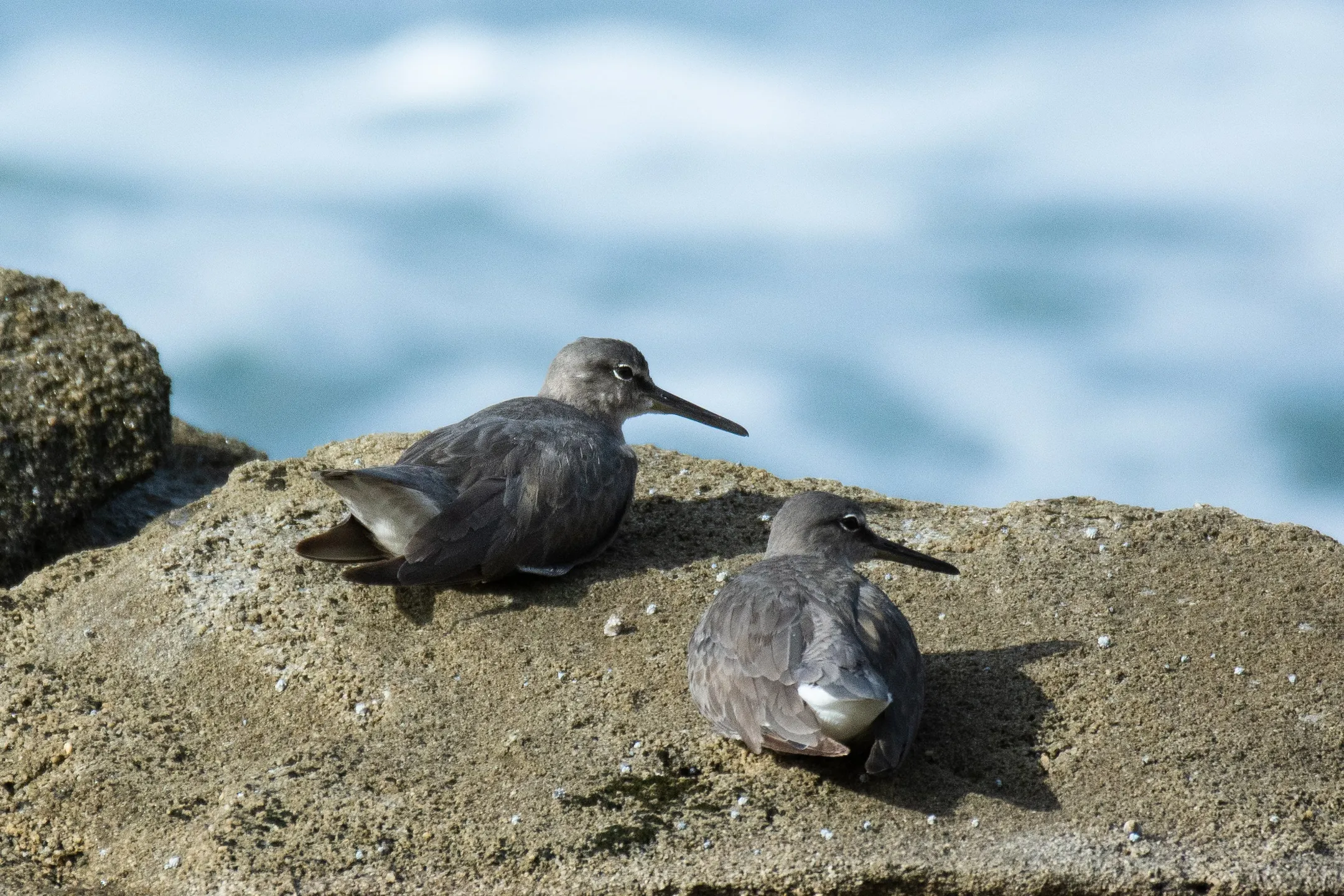Shorebirds
About two thirds of the Sunshine Coast's shorebird species migrate from the northern hemisphere each year, some travelling distances up to 15,000 kilometres one way.

Migratory shorebirds are the world’s most threatened group of birds.
An estimated 2 million shorebirds migrate annually to the coastal areas of Australia from their arctic breeding grounds in Asia and Alaska. More than half of these are experiencing a drop in population numbers.
Some species fly for days without food or rest and travel tens of thousands of kilometres to reach Australia. They arrive exhausted and spend September to April resting and feeding.
They gather in large numbers on the sandbanks and mudflats of the lower Maroochy River and Pumicestone Passage, as well as on rocky headlands such as Point Cartwright, Caloundra headland, and Point Arkwright.
As a coastal community, the Sunshine Coast provides important habitat for migratory shorebirds and is also home to resident shorebirds, that live here all year long.
Threats to shorebirds
Shorebirds need space, food, and rest to recover from their long flights and prepare for their return journey.
Shorebirds are easily disturbed by people, dogs, vehicles and watercrafts getting too close and causing them to fly away.
Share our coast with the shorebirds
You can help protect our shorebirds by:
- observing from a distance using binoculars
- not running at flocks of shorebirds
- choosing a location away from the birds for your activities
- keeping your dogs under control
- taking your rubbish home.
Learn more about our resident and migratory shorebirds.
Give shorebirds space to rest
Migratory shorebirds can travel at total of 20,000–30,000 km each year to spend the summer on the Sunshine Coast to feed and rest before flying back to their breeding grounds in the northern hemisphere.
On the Sunshine Coast, shorebird resting and feeding areas often overlap with recreational use areas. We can help the birds by giving them space and avoid disturbing them to ensure our summer visitors have enough energy for their long journey back.
Any disturbance to the birds during this time limits their ability to gain essential weight and energy. Even short disturbances add up and impact on their return journey, breeding success, and survival.
Off-leash dogs cause harm to shorebirds
Shorebirds view dogs as dangerous predators. Queensland Government best practice guidelines specify a 300 metre buffer between shorebird habitat and a dog off-leash area. This is based on research looking at which distances birds take flight, start raising alarm or become agitated when disturbed. It also considers research that shows shorebirds react earlier to a human with a dog than just a human alone.
By keeping dogs on leads near shorebirds, disturbance to shorebirds is reduced. In this way, we can give the shorebirds the space they need to rest and recover.
Find dog parks and off-leash areas away from shorebirds here.
Protection of shorebirds
About two-thirds of the local shorebirds are migratory species and are protected under Australia's bilateral agreements with China, Japan and the Republic of Korea, as well as under international agreements such as the Bonn convention on migratory species.
They are also protected under the Australian Government Environment Protection and Biodiversity Conservation (EPBC) Act 1999 and the Queensland Government Nature Conservation Act 1992.
Sunshine Coast shorebird habitat
Shorebirds live in estuaries, coastal foredunes and on rocky headlands. During low tide, they feed on sandbanks and mudflats, or on rocks close to the water's edge. At high tide, they roost in a safe, dry area above the high tide mark and wait for the tide to drop in their feeding areas. To save energy and limit flying, they select roost areas close to their feeding sites.
On the Sunshine Coast, most shorebirds are found in the lower Maroochy River and Pumicestone Passage, as well as on rocky headlands such as Point Cartwright, Caloundra headland, and Point Arkwright. Find out more about shorebirds at each of these locations below.
What is council doing to protect shorebirds
The shorebird conservation action plan guides council’s actions to try and protect these threatened birds.
Subpages
- Meet our shorebirds
Learn about some of our migratory and resident shorebirds that call the Sunshine Coast home.
- Shorebirds at Lower Maroochy River
The Lower Maroochy River is a high value shorebird habitat thanks to its sandbanks and mudflats.
 Shorebirds at Pumicestone Passage
Shorebirds at Pumicestone PassageThe Pumicestone Passage is a high value shorebird habitat thanks to its sandbanks and mudflats.
 Shorebirds at Rocky Headlands
Shorebirds at Rocky HeadlandsThe Sunshine Coast’s unique tidal rocky headlands offer high value shorebird habitat.
